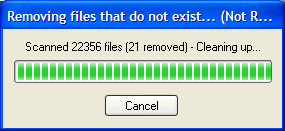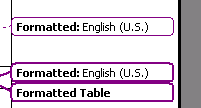A TV salesman is advocating the government buys a set top boxes for each analogue TV in Australia. He says it’s the best way to save the government money, because it’s costing AUD$50m/year to dual broadcast. And in financial terms, he’s right. Perhaps banning the sale of analogue sets might also hurry things along a little. $150m is his estimate for the government to bail itself out of dual-broadcasting.
But digital signals bite arse; SDTV has the same resolution as analogue, with the upside of no ghosting and the downsides of a loss of colour-depth plus dropouts affecting the audio and video streams. If you’re not getting ghosting on your current analogue signal (or it’s not annoying you), SDTV is a step down. HDTV is a massive improvement in raw data resolution, but no TVs are capable of displaying a raw 1920 x 1080 (the 1280 x 720 signal is academic, because it isn’t broadcast in Australia; and the signal is 1080i, there isn’t enough bandwidth allocated for 1080p) picture.
I don’t remember the step from Black and White TV to colour, but I know that colour sets were happily picking up the B&W signal before the changeover, and B&W sets kept working after the changeover. That would be bi-directional compatability. Same gig with FM radio when it went stereo – bi-directional compatability, because the stereo signal was on a seperate carrier encoded as the difference to the mono signal – cunning. Digital and analogue are co-existing quite happily at the moment, because the signals are being duplicated and transmitted (has anyone noticed the digital signal lags the analogue signal by about a second?), and apparently it costs a pretty penny to keep the dual broadcast going – probably in equipment maintenance costs (I don’t think the electricity is costing $1m / week).
So what do you actually get for your dollars in converting? If you step up to HDTV (no native resolution sets, remember) you get native widescreen capability rather than letterboxing, plus 5.1 sound rather than poxy stereo. Because of the compression, for a given set of bandwidth, you can have more video streams (approximately four SD can fit in the bandwidth of a single HD broadcast). Bitrates and compression can both be played with to improve the signal’s reliability and quality. And channels don’t bump into each other like they do in the analogue world (which is why the stations are on such widely seperated bands). But look at pay TV – like Bruce said, 57 channels and nothing on. Are you fixated by what’s currently available on broadcast TV? Will more channels increase the amount of TV you want to watch?
What was the point in this whole process anyway? What’s wrong with the PAL signal, and why did we rush in and select digital TV formats? Why didn’t the Australian government emulate the Irish government and just sit on it’s hands for a decade, waiting to see what happened in the US, Japan, Europe and China, and then evaluate the technical aspects of the winning systems? Why encourage the public to run around spending $10,000 a TV on technologies that are prone to disappointing failure (pixel death)? Any why are we shipping so much cash offshore to pay for the damn things?
We should have delayed going down the Digital TV road until it became attractive.


 “When you are dealing with rootkits and some advanced spyware programs, the only solution is to rebuild from scratch. In some cases, there really is no way to recover without
“When you are dealing with rootkits and some advanced spyware programs, the only solution is to rebuild from scratch. In some cases, there really is no way to recover without  Anybody who lives outside the US will know that Microsoft Word does evil things, with little bits of text changing unaccountably into US English at seemingly random times. Suddenly a perfectly spelt word like… well, spelt could be a contender actually, will get that curly red line underneath it.
Anybody who lives outside the US will know that Microsoft Word does evil things, with little bits of text changing unaccountably into US English at seemingly random times. Suddenly a perfectly spelt word like… well, spelt could be a contender actually, will get that curly red line underneath it.